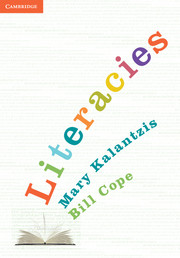Book contents
- Frontmatter
- Contents
- Acknowledgements
- Introduction The work of learning and teaching literacies
- Part A The ‘Why’ of Literacies
- Part B Approaches to Literacies
- Part C The ‘What’ of Literacies
- Part D The ‘How’ of Literacies
- Chapter 12 Literacies to think and to learn
- Chapter 13 Literacies pedagogy
- Chapter 14 Literacies and learner differences
- Chapter 15 Literacies standards and assessment
- References
- Index
Chapter 12 - Literacies to think and to learn
from Part D - The ‘How’ of Literacies
- Frontmatter
- Contents
- Acknowledgements
- Introduction The work of learning and teaching literacies
- Part A The ‘Why’ of Literacies
- Part B Approaches to Literacies
- Part C The ‘What’ of Literacies
- Part D The ‘How’ of Literacies
- Chapter 12 Literacies to think and to learn
- Chapter 13 Literacies pedagogy
- Chapter 14 Literacies and learner differences
- Chapter 15 Literacies standards and assessment
- References
- Index
Summary
Overview
We begin this chapter by exploring the similarities and differences between communication in humans and other animals. One key difference is our human capacity to apply symbols to meanings in the world, and to connect symbols with each other into symbol systems. Symbols represent general things – the concept of ‘dog’ as distinct from this dog, Fido. Although young children learn the word ‘dog’ at a young age, it is not until they are older that they use the word as a concept. Conceptualisation can also occur in the other modes; for instance, in visual or gestural meanings. All academic disciplines use literacies as a basis for communicating knowledge, and also for learners to represent knowledge to themselves in their thinking. Literacies, for this reason, are the most basic of all basics in education.
Literacies and cognitive development
Human thinking compared to other thinking in animals
Animals other than humans can also think and communicate. However, no other animals have our species’ peculiar representational capacities (the way we make meanings for ourselves) and communicative capacities (the way we make meanings for others). Nor do they have our thinking capacities.
- Type
- Chapter
- Information
- Literacies , pp. 325 - 354Publisher: Cambridge University PressPrint publication year: 2012
- 1
- Cited by



